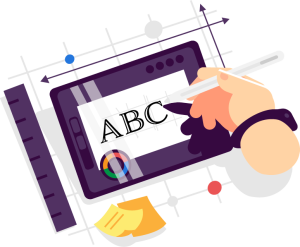Table of Contents
Intro
Email marketing has been around for quite some time now, but it’s still one of the most effective ways to reach your target audience and engage with them. Whether you’re a small business owner or a large corporation, email marketing can help you build relationships with your customers, drive sales, and increase brand awareness.
One of the key benefits of email marketing is its ability to reach a large number of people at once, making it a cost-effective and efficient way to communicate with your audience. However, it’s important to approach email marketing with a strategy and best practices to ensure that your emails are effective and achieve your goals.
The Benefits
In today’s digital age, email marketing has emerged as one of the most effective and efficient ways to communicate with customers, promote products and services, and generate revenue. It is a highly targeted and personalized form of marketing that allows businesses to reach their target audience directly through their inbox.
Here are some of the key benefits of email marketing:
1. High ROI
Email marketing is one of the most cost-effective ways of marketing, with a return on investment (ROI) that can be as high as 4400%. This is because email marketing allows businesses to reach their target audience directly and is highly targeted and personalized.
2. Build Relationship
Email marketing provides an opportunity for businesses to build a relationship with their customers by sending regular newsletters, promotions, and updates. This helps businesses stay top-of-mind with their customers, establish trust and credibility, and increase customer loyalty.
3. Highly Targeted
Email marketing allows businesses to target their message to specific customers based on their interests, behavior, and preferences. This means that businesses can tailor their message to the right audience, resulting in higher open rates, click-through rates, and conversions.
4. Measurable Results
Email marketing provides businesses with real-time data on the performance of their campaigns. This includes open rates, click-through rates, conversion rates, and unsubscribe rates, which allows businesses to measure the effectiveness of their campaigns and make data-driven decisions to improve them.
5. Easy To Create & Automate
Email marketing is easy to create and automate, which makes it a scalable solution for businesses of all sizes. There are many email marketing platforms available that provide templates, automation, and analytics, making it easy for businesses to get started with email marketing.

Best Practices for Email Marketing
The first step in creating a successful email marketing campaign is defining your goals. What do you want to achieve with your email campaign? Is it to promote a new product or service, increase sales, or build brand awareness? Once you have a clear understanding of your goals, you can create a strategy that aligns with them.
Building a high-quality email list is another important aspect of email marketing. You want to ensure that your list is composed of people who have opted-in to receive your emails and are interested in your products or services. This can be done by offering incentives such as a discount or free content in exchange for signing up.
Creating compelling content is essential to the success of your email marketing campaign. Your emails should be engaging and informative, providing value to your subscribers. This can include exclusive offers, educational content, or updates on your products or services.
Personalization is becoming increasingly important in email marketing, with businesses using data and AI to create highly personalized and targeted emails. This can include segmenting your list based on demographics, purchase history, or interests, and tailoring your content to each segment.
Optimizing your emails for mobile devices is crucial, as more and more people are checking their emails on their smartphones. Your emails should be easy to read and navigate on a small screen, with clear calls-to-action and minimal clutter.
Testing and analyzing your email campaigns is important in determining their effectiveness and making data-driven decisions for future campaigns. This can include testing different subject lines, email layouts, or CTAs to see what resonates with your audience.
1. Defining Your Goals
- Increase sales;
- Generate leads;
- build brand awareness;
- improve customer engagement.
2. Quality Contact List
- Contacts approved the opt-in;
- Segmented contact lists;
- Targeted contact lists.
3. Compelling Content
- Informative;
- Engaging;
- Providing value.
4. Personalization
- Using their first name;
- Recommending products based on their past purchases;
- Sending targeted promotions based on their location or behavior on your website.
5. Optimize For Mobile
- Responsive design;
- Short and concise subject lines;
- Simple email design simple;
- Easy to read on small screens.
6. Test and Analyze
- A/B testing subject lines, content, and call-to-actions;
- Analyzing open and click-through rates;
- Monitoring unsubscribe rates.
7. Automation and Drip
- Automation allows you to send triggered emails based on specific actions or behaviors, such as abandoned cart reminders or welcome emails;
- Drip campaigns are a series of emails sent over a period of time, which can be used to educate subscribers or promote specific products or services.
8. Call-to-Actions
- Clear and compelling call-to-action (CTA);
- Prominently displayed;
- Use action-oriented language;
- Easy to click on. You can use different types of CTAs such as buttons, links, or images, depending on your goal and audience.
Creating Compelling Content
Creating compelling content is essential to the success of your email marketing campaigns. Your subscribers receive countless emails every day, so it’s important to make sure that your content stands out and provides value to them. Compelling content should capture the recipient’s attention, be engaging, informative, and ultimately drive them towards taking action.
Here are some tips on creating compelling content for your email marketing campaigns:
Know your audience: To create content that resonates with your audience, it’s important to understand their needs, interests, and pain points. You can use surveys, feedback, or social media insights to gather information about your subscribers and create content that speaks directly to their needs.
Keep it concise: People have short attention spans, so it’s important to keep your content concise and to the point. Your emails should be easy to scan and understand, with clear headlines and subheadings that highlight the main points.
Use visual content: Visual content such as images, videos, and infographics can help break up the text and make your emails more engaging. Visual content can also help communicate complex ideas more effectively and make your emails more memorable.
Provide value: Your subscribers are looking for value in your emails, so it’s important to provide content that helps them solve problems, learn something new, or be entertained. This could include how-to guides, case studies, industry news, or exclusive offers.
Use storytelling: Storytelling is a powerful way to engage your audience and create an emotional connection with your brand. By telling stories about your brand, products, or customers, you can create a compelling narrative that resonates with your subscribers.
Make it actionable: Your emails should have a clear call-to-action (CTA) that encourages your subscribers to take action. Your CTA should be prominent and easy to find, and the action should be clear and easy to complete.
In conclusion, creating compelling content is an essential part of email marketing. By understanding your audience, keeping your content concise, using visual content, providing value, using storytelling, and making it actionable, you can create email campaigns that engage your subscribers and drive them towards taking action. Remember to always test and analyze your content to see what works best for your audience and adjust your strategy accordingly.


Example - Email Marketing Campaign
Subject Line: Hi [Recipient], Have You Tried Airbnb Plus?
Body:
Hi [Recipient],
We’re excited to introduce you to Airbnb Plus – a new selection of homes verified for quality and comfort.
Every Airbnb Plus home is inspected and verified by a local expert to ensure it meets high standards of comfort, quality, and style. From cozy apartments to spacious villas, each home is designed to make your stay as comfortable as possible.
As one of our valued guests, we’d love for you to experience Airbnb Plus for yourself. To make it even easier, we’re offering you a $50 discount on your first Airbnb Plus booking.
Simply use the code AIRBNBPLUS50 at checkout to receive your discount.
We hope you’ll give Airbnb Plus a try and discover a new level of comfort and style on your next trip.
Happy travels!
Best regards, The Airbnb team
Analysis
This email campaign from Airbnb is well-crafted in several ways. Firstly, the subject line is personalized with the recipient’s name, which helps grab their attention and increase the likelihood of them opening the email.
The body of the email is clear, concise, and focused on introducing the recipient to Airbnb Plus. The copy is straightforward and easy to understand, highlighting the key benefits of staying in an Airbnb Plus home. The use of images helps showcase the quality and comfort of the homes.
The call-to-action (CTA) is clear and prominent, offering the recipient a $50 discount on their first Airbnb Plus booking. This incentive is a great way to encourage recipients to take action and try out Airbnb Plus for themselves.
Overall, this email campaign is a great example of effective email marketing. It’s personalized, informative, and includes a clear CTA that encourages recipients to take action. The use of imagery also helps showcase the quality of Airbnb Plus homes, making it more appealing to potential customers.





